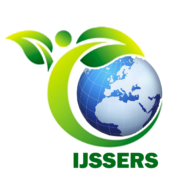Asset Management Based on Wealth Management in an Effort to Increase Funding for Islamic Boarding School Education
The purpose of this study is to describe and analyze in depth about asset management based on walth management in an effort to increase the educational financing of Hidayatullah Pule Trenggalek and Qomarul Hidayah Trenggalek Islamic boarding schools. The formulation of the problem that was explored in depth included 1) wealth management-based asset planning in increasing the ability to finance education at the Hidayatullah Pule Trenggalek Islamic Boarding School and Qomarul Hidayah Trenggalek Islamic Boarding School2. ) implementing wealth management-based asset management in increasing the ability to finance education at the Hidayatullah Pule Trenggalek Islamic Boarding School and Qomarul Hidayah Trenggalek Islamic Boarding School 3) wealth management-based asset supervision in increasing the ability to finance education at the Hidayatullah Pule Trenggalek Islamic Boarding School and Qomarul Hidayah Trenggalek Islamic Boarding School. The research approach uses qualitative methods. Data collection techniques using participant observation, in-depth interviews and documentation. The data analysis techniques used were 1) single case data analysis, 2) cross-site analysis. The results of the research that has been carried out show that: 1) Planning for asset management in Islamic boarding schools is the formulation of plans for land acquisition, development of educational lines and business units, participation of pesantren residents and treatment of student savings and payments; 2) Implementation of asset management is carried out by adding land, establishing new lines of education, business units, treating student savings as capital, or cooperating with conventional banks; 3) Supervision is carried out at the business unit level with material focusing on the development and contribution of Islamic boarding schools. The research findings reinforce Gill’s opinion that assets are cash, merchandise, land, buildings, and equipment or the like of value. Strengthening Mulyasa’s opinion that institutions must have creative and dynamic fund management in line with the needs of developments that occur in society and the environment and think strategically in order to make the allocation of existing resources more effective in achieving goals.

